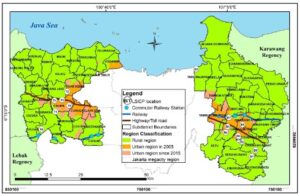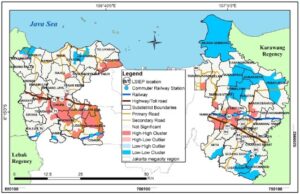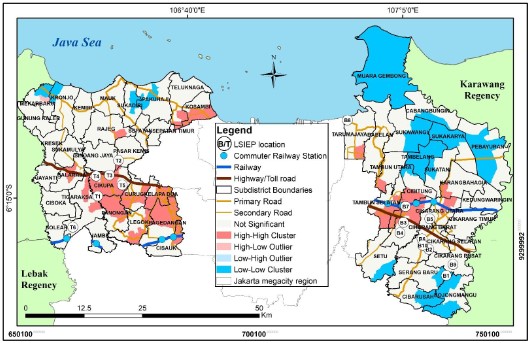Understanding Industrial Land Development on Rural-Urban Land Transformation of Jakarta Megacity’s Outer Suburb


Author: Adib Ahmad Kurnia, Ernan Rustiadi, Akhmad Fauzi, Andrea Emma Pravitasari, Izuru Saizen, Jan Ženka
Abstract: After decentralization, there was massive development in Jakarta megacity’s outer suburbs (JMOS), especially in Bekasi and Tangerang regencies, marked by large-scale industrial estate/park (LSIEP) and followed by new town developments. However, this process led to the emergence of “chaotic” urban-rural land patterns. This study sought to identify the extent to which LSIEP development has affected rural-urban land transformation (RULT). The primary data were land use/cover (LUC) data from 2005, 2015, and 2020 and the LSIEP distributions. The methods applied are the Patch-generating Land Use Simulation (PLUS) model for 2025’s LUC prediction and the RULT index approach, RULT index development using the analytical hierarchy process. These combined approaches were novel in Indonesia, which usually relies on Cellular Automata (CA)-Markov, overlay (spatial), and descriptive statistics analyses to describe the RULT phenomenon. It was found that the villages located around the LSIEP close to the Jakarta megacity toll road network and those adjacent to the municipality (city) had been transformed into urban areas, while villages far from those locations were still rural. This study’s results help clarify the rural to urban transformation in Jakarta megacity’s outer suburbs and could be used as input for spatial planning policy.
Keywords: decentralization; industrial park/estate, Jakarta metropolitan region, land use/cover prediction, regional development, spatiotemporal analysis, urban development, spatial planning
Journal URL: https://www.mdpi.com/2073-445X/11/5/670/htm

 English
English